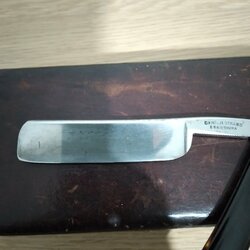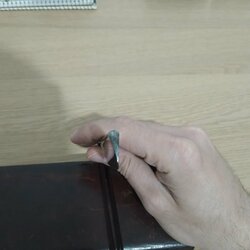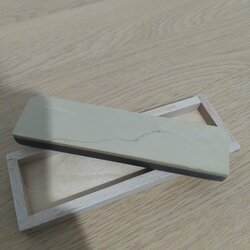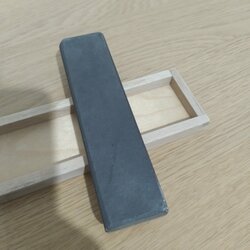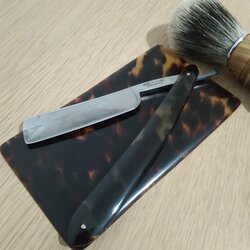Greets!
I have seen factory new 6/8 referred to as 20 mm.
Now, knowing that old razors were varied in size does not tell me if a new razor should be 19 or 20 mm?
For reference, I am trying to determine how honed my Heljestrands have been, as they now measure about 18mm each-light enough if 19 mm NOS, but moderate if they started at 20.
As near wedges, it is not as easy to use the profile of the blade in spotting hone wear based on missing blade width vs the grind itself.
Pics attached for help, kind thanks and salutations gents!
I have seen factory new 6/8 referred to as 20 mm.
Now, knowing that old razors were varied in size does not tell me if a new razor should be 19 or 20 mm?
For reference, I am trying to determine how honed my Heljestrands have been, as they now measure about 18mm each-light enough if 19 mm NOS, but moderate if they started at 20.
As near wedges, it is not as easy to use the profile of the blade in spotting hone wear based on missing blade width vs the grind itself.
Pics attached for help, kind thanks and salutations gents!
